Excerpt from A Passion for Permit by Jonathan Olch
What Are the Desirable Features of a Crab Fly?
In my experience, no other flies are as “top secret” as permit crab flies! In designing your own crab flies, first forge a mental image of the movement, habits and behavior of the real, live critters. Short of probing about in their domains with a mask and snorkel, just go to You Tube, where you can see videos of many types of crustaceans moving freely underwater.
While fishing together, Aaron Adams reminded me of how a swimming crab keeps its trailing claw extended when it is moving. Other types of crabs—walking crabs such as reef crabs, mud crabs, stone crabs, as well as stationary blue crabs—raise their claws in a defensive posture when confronted by a predator. The crab flies that I tie just happen to utilize materials for claws that are buoyant and rise as the crab fly sinks. In my case, this claw action is an unintended consequence—and benefit. Steve and Dustin Huff, whose combined experience and savvy on the flats is without equal, absolutely emphasize this feature in tying their own proprietary flies.
Avoid tying or fishing a “spinning” crab. There is no bait more highly coveted by a permit than a live blue crab. If that same crab spins on a hook—it will be rejected. It just doesn’t behave naturally. This same pitfall exists in tying or fishing a walking crab pattern that you will hardly strip at all. If that fly turns over as it sinks, or arrives on the bottom upside down, you can write off the encounter.
One method of minimizing “spinning” is to construct your fly with a keel underbody. There are a couple of ways to do this: bead chain on a mono loop, lead strips laid-in parallel to the hook shank, etc. Needless to say, the Huffs have been cognizant of the need to tie crabs that do not wobble or spin before most of us even recognized the need to weight a crab fly.
In nature, not all crabs have all of their appendages intact. Shit happens… Still, the more realistic a fly looks, the better. This is especially true in very clear, shallow and still conditions. It is not the worst thing if your fly is missing a claw or a leg. It may trigger a strike from a permit that views it in the same vein a trout is drawn to a crippled, emerging mayfly.
Suggestive Crab Flies
As I alluded to earlier, Del’s Merkin is a highly successful swimming crab imitation that when cast, sinks to the bottom quickly. You can strip the fly, allowing it to make a “puff” along the bottom and stop it. Strip the Merkin again, then let it fall back to the bottom. There is a lot of flexibility in how you can work that fly. The Merkin is the epitome of a suggestive crab fly. It has universal appeal and over the years has proven very effective in Florida and Ascension Bay.
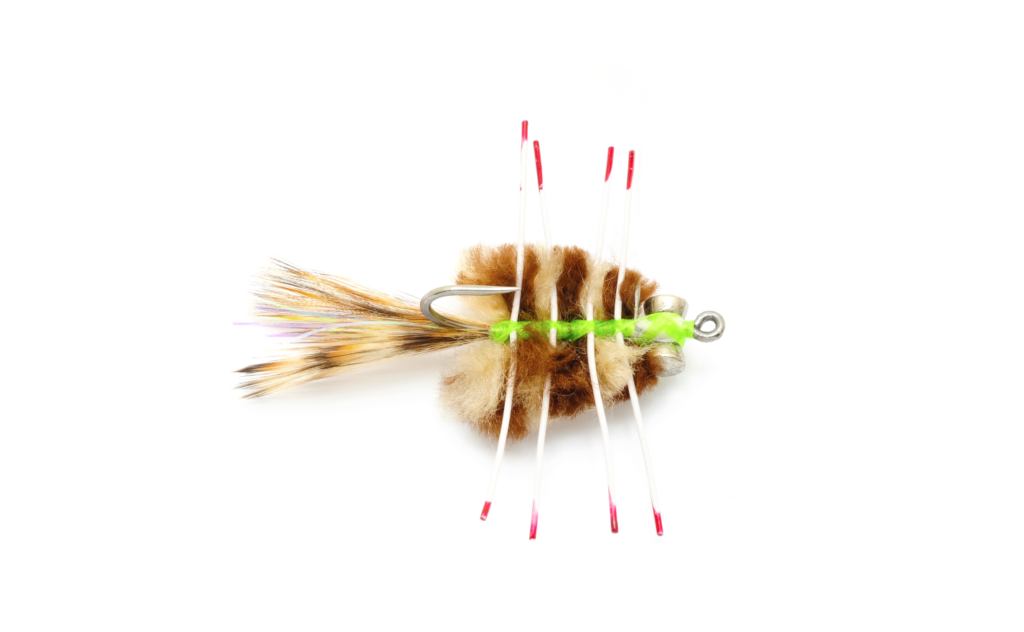
In contrast to the Merkin and the Raghead, it seems as though most fly patterns of older vintage run their cycle. Nat Ragland’s Puff, one of the original, successful permit flies, imitates a shrimp decently. It bears some resemblance to a baby lobster, too. When is the last time you saw this fly—or a Jewett’s Crab—in a permit angler’s fly box? Some of the “older” fly patterns are worth remembering. They worked for a reason. More often than not, formerly effective fly patterns have disappeared, replaced by flies tied mostly with newer, sexier and shinier materials. Give some of the old patterns a fresh look—and see how you can improve upon them to suit your permit fishing.
In Belize, rounded crab fly bodies work better on the coral and grass flats than flat-bodied crabs such as a Merkin or the Raghead. This is largely due to the fact that on those types of flats, walking crabs such as green reef crabs (Mithrax) are the predominant species. The Bauer Crab is a persuasive fly because it is the same shape and silhouette of the carapace of a GRC. It is a fly that is meant to sink to the bottom and sit there with an occasional twitch or two. I find the Bauer Crab most effective when fished on short, broken or mixed coral.
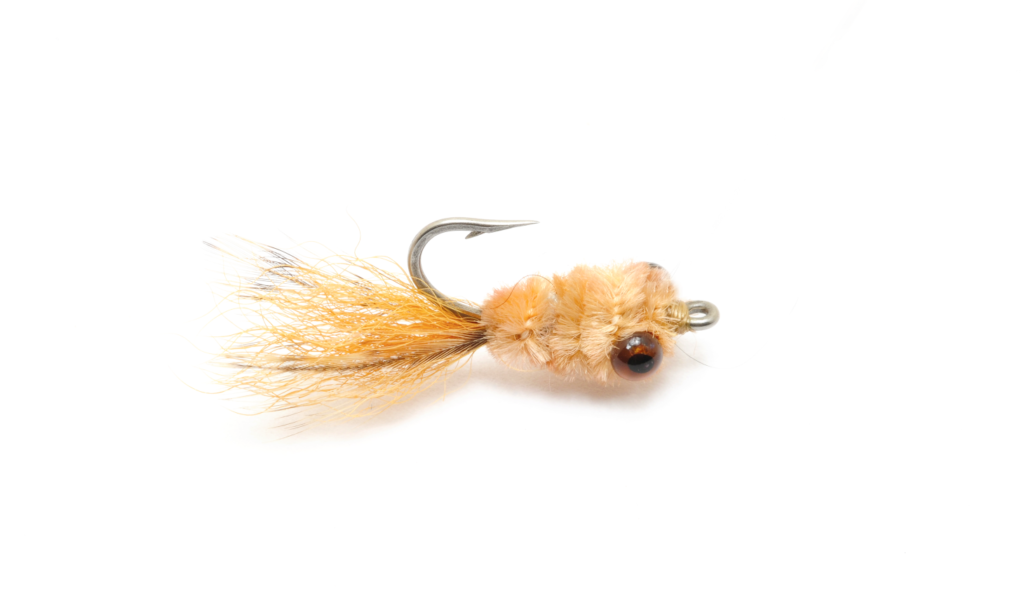
In thick turtle grass, the Bauer Crab can get lost or buried in the bottom. Several of the Puglisi crab patterns are popular in Belizean lagoons. They can also work well on grass and mixed bottom flats when tied with smaller lead eyes. These suggestive crab flies flare and act lively when stripped.
I caught three permit of six, eight and 11 pounds this afternoon in a lagoon near Dangriga on a tan Puglisi crab. In the lagoons, one has to have a fly that sinks to the bottom right away. The permit that inhabit these areas are always looking at or along the bottom for scurrying crabs. A puff of mud made from a stripped crab fly does the trick. Realistic-looking, intricate flies are not the ticket here. A decent silhouette and suggestive, wavy materials in the tail of the crab are all that is needed.
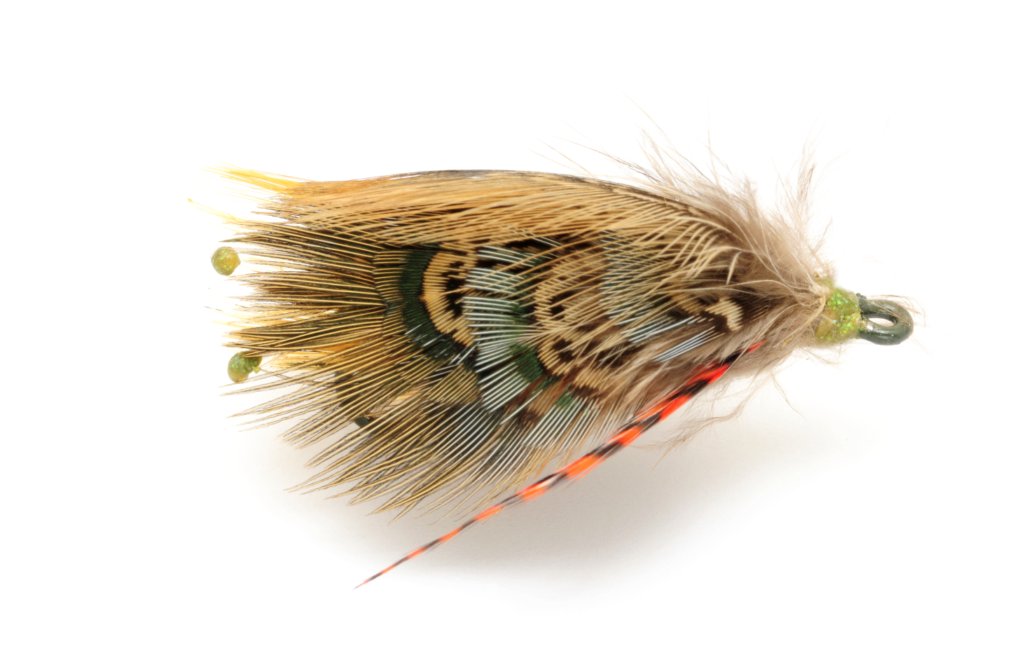
On another day, the fish that we did run into were found on the western shorelines of Northern Cay. These few fish could be seen in the turtle grass in less than two feet of water. I hampered myself during the morning by fishing a tan Puglisi crab pattern that was too heavily weighted for the conditions. As a result, I ended up getting hung up on the turtle grass too often. Two permit actually charged the fly. But when I attempted to set the hook I did not feel either one of these permit. I am convinced that the fly became buried in the turtle grass and the permit just missed the fly when it appeared as though they were stopping and then sucking in the crab pattern. I eventually modified the fly to work by crimping off half of the bulk of the lead eyes on each side of the fly.
Floating Crabs
Okay, I admit it. I am totally enamored by any reasonable opportunity to throw a floating crab fly to a permit. It represents the pinnacle of sight fishing. Believe me, permit do rise to the surface to pick off floating crabs, whether targeting a “crab hatch” through one of the passes in the Florida Keys or knocking over floating mangrove leaves in a lagoon where crabs float on top of them.
Florida guide Simon Becker made a major contribution to permit fly design and angling strategy with his floating crab. A simple and durable foam-bodied design, the fly floats well and presents a realistic profile. It is the versatility of the fly that deserves kudos, though. The unweighted crab when fished subsurface hovers safely above the bottom in conjunction with a sliding sinker on the leader. The sinker plummets to the bottom instead of the fly. The adjustable sinker is kept in place by a tight rubber band over it. Brilliant! The concept makes perfect sense. Why would you want to do everything correctly in your presentation, only to have your fly disappear into coral or turtle grass at the seminal moment of the skirmish between you and your permit?
I read somewhere that storied Key West guide Gil Drake, Jr. once used a deer hair popper to entice a strike from a loafing permit. This may be an interesting strategy before, during or after a “crab hatch.” The concept also generally bears merit in situations where permit are suspended higher in the water column.
Slow-Sinking Crabs
Slow-sinking crabs are a personal favorite of mine. They are effective in most situations where permit are laid-up near the surface or are cruising or motionless in the upper portion of the water column. Short of fishing a surface floating crab, a slow-sinking crab provides the next best option for maximizing sight fishing. The flow of events takes longer to unfold. The permit will move to your fly more deliberately. With the slowdown, sometimes you can actually read the permit’s body language while it deliberates on whether to finally munch on the fly. Strong current may limit the effectiveness of this type of fly due to the potential of drag, which can accelerate or decelerate the fly unnaturally. Slow-sinking types of crabs tend to be less effective in marl-bottomed lagoons.
Sinking Crabs
Sinking crabs such as the Merkin and the Raghead are tied with lead eyes and water absorbent materials that allow the fly to get down fast. Most of the permit fishing in the Keys requires a sinking crab to combat the higher tidal heights and strong currents found along the edge of finger channels, cuts and passes. In lagoons and flats with mud or marl bottoms, you also need a fly that gets to the bottom now. Once there, make one long, mud-puff drag across the bottom. Note I describe the action as “drag” as opposed to “strip” or “jerk.” Watch the permit to see if it stops, fans its tail excitedly or darkens in color. Yes—he has it! Otherwise, make one or two more “locator” short strips, then stop.
Inspiration to Create Your Own Permit Flies
Creative fly tying offers the chance to complete the circle in your evolution as a permit angler. Off the water, if you’ve got the permit bug, your mind remains deeply engrossed in the behavior of the permit, its feeding habits, and trigger mechanisms that compel it to target and capture its prey. Your mind cannot help but wade into the world of a certain crab, shrimp or other diminutive flats creature.
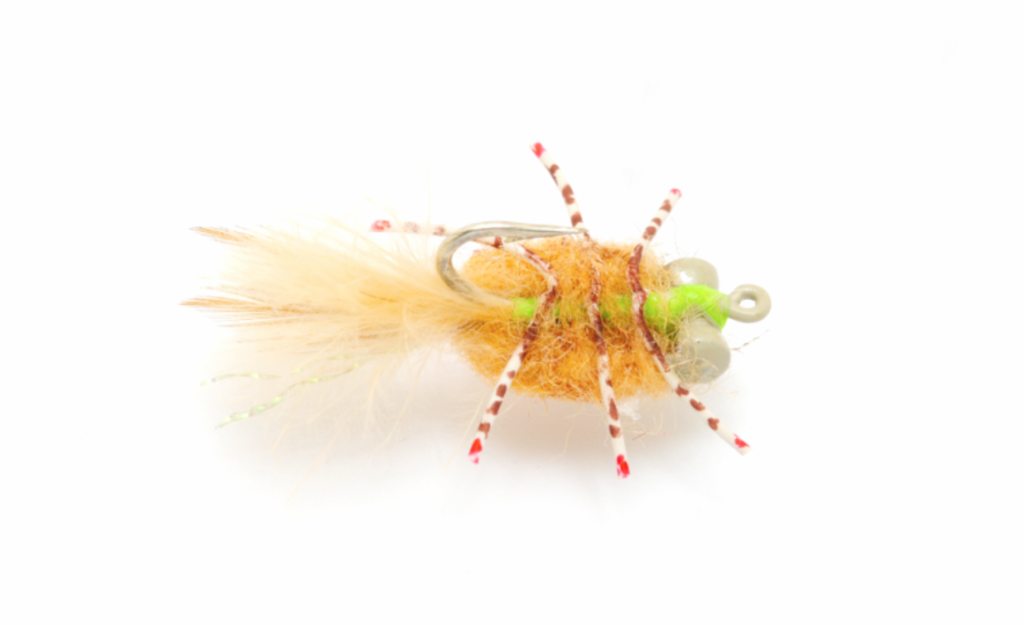
Which features stand out prominently? How does it move when it is relaxed, or trying to escape? How about translucency or coloration? The observations you make will pay immediate results the next time you are in front of a permit and choreographing the movements of your fly in relation to the prey and the reaction of that fish. Consider creating a diverse range of permit flies for your own use, especially if you travel extensively to new and unfamiliar countries. If you concentrate on home waters, adapt your fly designs to work specifically for the types of habitats and conditions you will be fishing!
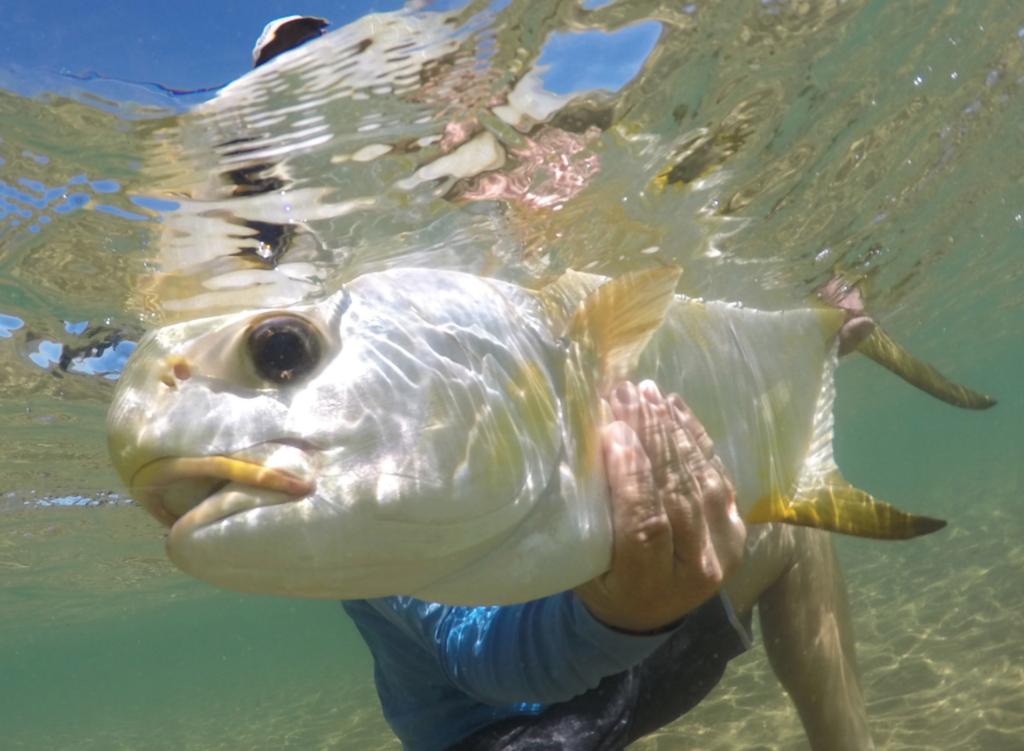
I cannot overstate the thrill you will feel if you are vested in the design of your own permit flies and, ultimately, discover permit want to eat your fly. These flies become expressions of your ideas. These ideas spring forth during idle moments and grip you with energy. The first iteration of your idea may be a dud. However, you will find some aspects of that fly compelling. Spontaneous moments of inspiration will follow when you least expect it, firing your creative juices. By the time you evolve to the third or fourth prototype, that fly is probably ready to fool a permit. When it happens, no permit will be more satisfying to catch than the one that just ate your fly! A visceral connection is forged between you and the permit on a level you have not felt previously.

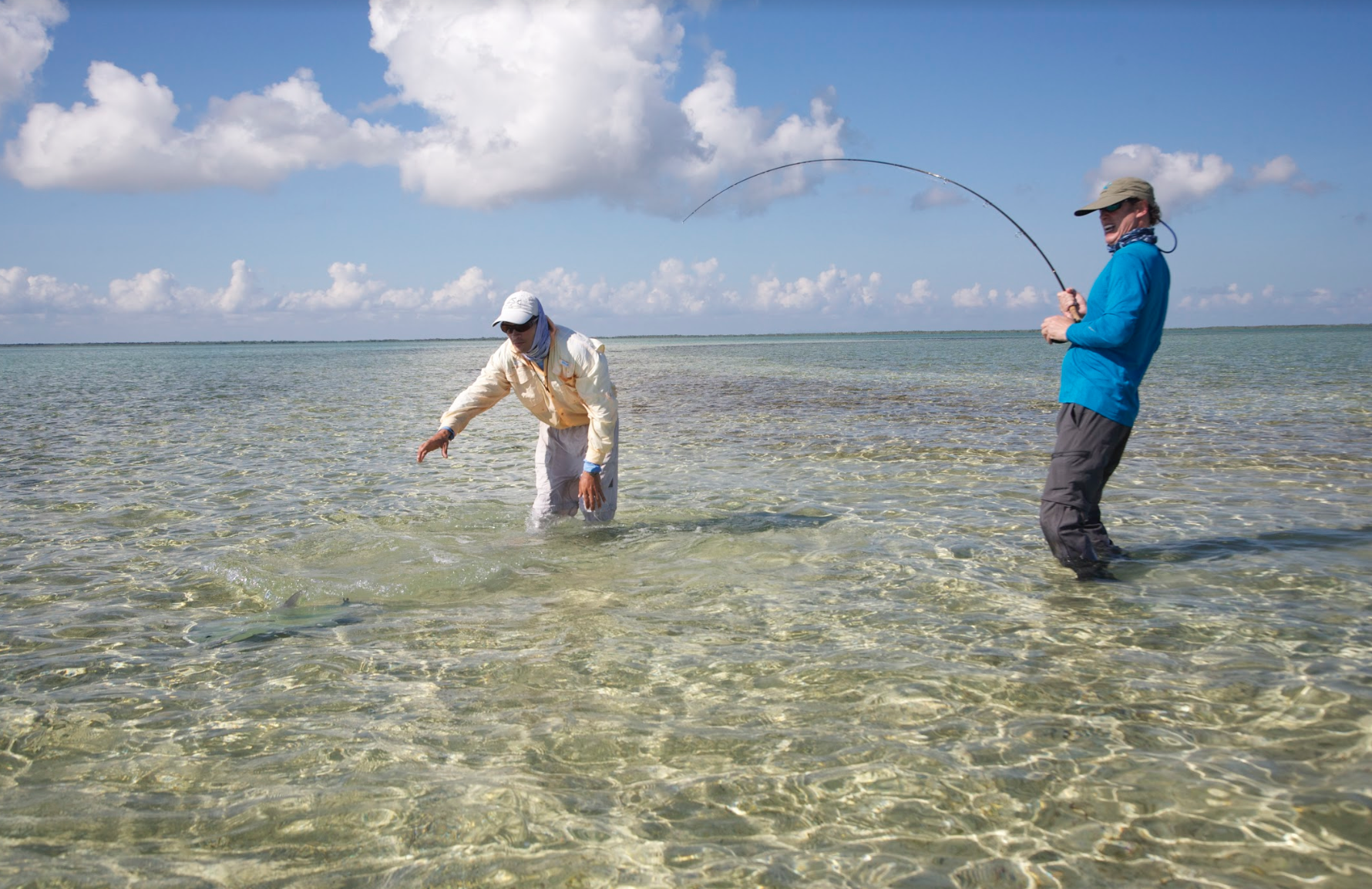

Very good article stating how to catch and develop Flies that will fool these guys!